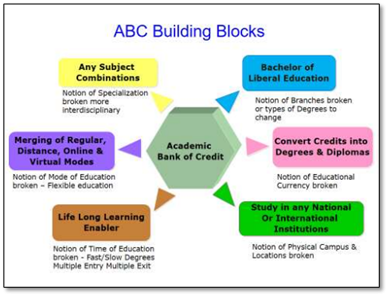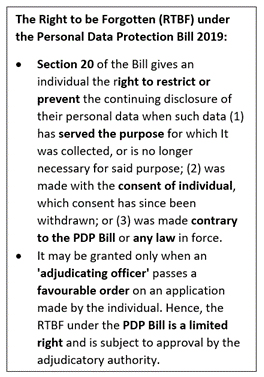Wednesday, 2nd June 2021
Defence Ministry notifies second negative import list
In News
The Defence Ministry on Monday notified the second negative import list, now renamed as the ‘positive indigenisation list’, of 108 items that can now be only purchased from indigenous sources.
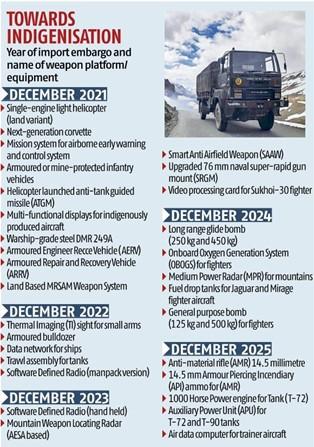
About the News
- The new list takes the total number on the list to 209. It is planned to be implemented progressively with effect from December 2021 to December 2025.
- As part of efforts to boost the domestic defence industry and promote defence exports, last August, the government notified first ‘positive indigenisation’ list comprising 101 items.
- The second list lays special focus on weapons and systems which are currently under development/trials and are likely to translate into firm orders in the future.
- Like the first list, import substitution of ammunition which is a recurring requirement has been given special focus.
- The ‘second positive indigenisation list’ comprises complex systems, sensors, simulator, weapons and ammunitions like helicopters, next generation corvettes, Air Borne Early Warning and Control (AEW&C) systems, tank engines, medium power radar for mountains, Medium Range Surface to Air Missile (MRSAM) weapon systems and many more such items to fulfil the requirements of Indian armed forces
Significance of the move
- This move will facilitate an environment for Indian defence manufacturers to create world class infrastructure, assist in the government’s ‘Make in India’ vision to make India self-reliant in defence and develop the capabilities for defence export in the near future.
- Modernisation, upgradation and sustenance of military equipment and weapons is a continuous process and constant endeavour to equip the Armed Forces with modern weapon systems/ equipment enhance the operational capability of the Armed Forces to tackle the present security scenario of the country efficiently.
Cryopreservation
In News
Researchers have explored new ways to culture living heart cells for microgravity research aboard the International Space Station (ISS).
About the News
- The researchers found that cryopreservation, a process of storing cells at minus 80°C, makes it easier to transport these cells to the orbiting lab, providing more flexibility in launch and operations schedules.
- The investigation cultured heart precursor cells on the ISS to study how microgravity affects the number of cells produced and how many of them survive.
- Cryopreservation does not appear to affect the cells and even offers the added benefit of protecting cells from excess gravity experienced during launch. The cryopreserved heart cells flew to the space station in March 2020. Astronauts thawed and successfully cultured them, generating beating heart cells. Those were returned to Earth after 22 days of spaceflight.
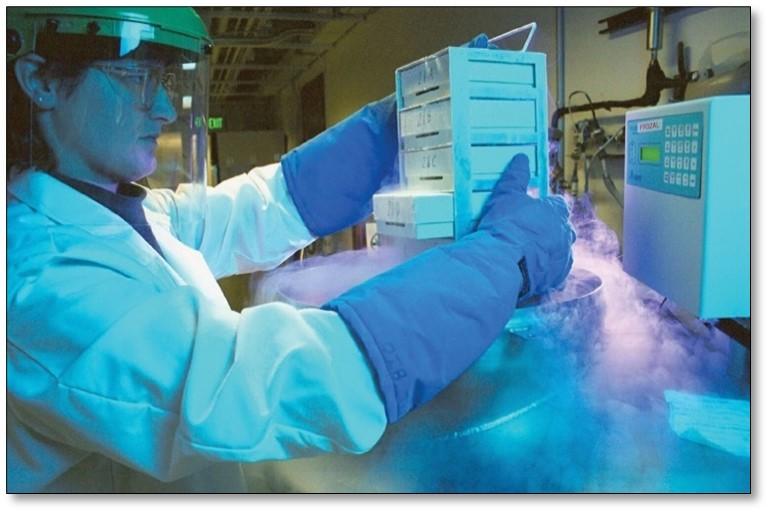
What is Cryopreservation?
- Cryopreservation is a process that preserves organelles, cells, tissues, or any other biological constructs by cooling the samples to ultra-low temperatures (usually in liquid nitrogen at − 196 °C), whereby all metabolic activities are suspended.
- Cryopreservation is based on the ability of certain small molecules to enter cells and prevent dehydration and formation of intracellular ice crystals, which can cause cell death and destruction of cell organelles during the freezing process.
- Two common cryoprotective agents are dimethyl sulfoxide (DMSO) and glycerol.
- Applications: The applications of cryopreservation are found in areas like cryopreservation of cells or organs, cryosurgery, biochemistry and molecular biology, food sciences, ecology and plant physiology and many medical applications, such as blood transfusion, bone marrow transplantation, artificial insemination, and in vitro fertilization (IVF).
- Advantages: Some suggested advantages of cryopreservation include the possible banking of cells for organ transplantation, sufficient time for transportation of cells and tissues and helps preserve research sources to identify unknown transmissible diseases or pathogens and treatment of known diseases that have currently no therapy option.
Sources: https://www.ncbi.nlm.nih.gov/pmc/articles/PMC5395684/
Orphaned children due to pandemic and their adoption
In News: Legal issues involved in adoption pleas of Covid 19 orphans:
Of late, some people have been offering infants for instant adoption by selling sob stories of how the children have lost their parents to the dreaded corona virus. These unscrupulous people target gullible persons who fall into the trap, little realising that such adoptions are illegal.
The repercussions of being unaware:
- The lack of inputs for proper procedures for legal adoption and hasty sentimental considerations are exploited for exorbitant sums of money.
- According to UNICEF, India has over 30 million orphan and abandoned children due to unfortunate parental deaths, wilful abandonment etc.
Protection granted by the law:
- The Juvenile Justice Rules of 2016 and the Adoption Regulations of 2017 enabled the creation of Central Adoption Resource Authority (CARA), a statutory body for the regulation, monitoring and control of all intra-country and inter-country adoptions.
- India is a signatory to the UN Convention on the Rights of the Child. Thus, protections afforded to children in India became a legal mandate of all authorities and courts.
How does the Juvenile Justice Act work?
- The Act streamlined the adoption and rehabilitation procedures for orphans, abandoned and surrendered children.
- Only such children declared legally free for adoption under the Juvenile Justice Act by prescribed procedures can be adopted.
- Children of relatives can also be adopted under the Juvenile Justice Act, if desired.
- Any person or organisation offering or receiving such children for adoption in violation of the Juvenile Justice Act and the Adoption Regulations invites punishment up to three years and a fine of ₹1 lakh, or both.
Procedure for adoption:
- The eligibility of prospective adoptive parents living in India, duly registered on the Child Adoption Resource Information and Guidance System (CARINGS), irrespective of marital status and religion, is adjudged byspecialised adoption agencies preparing home study reports.
- Upon approval, as per seniority in the adoption list, prospective children are offered, and pre-adoption foster careThe specialised adoption agency then secures court orders approving the adoption.
- All non-resident personsapproach authorised adoption agencies in their country of residence for registration under CARINGS whose eligibility is adjudged by authorised foreign adoption agencies through home study reports.
- CARA then issues a pre-adoption ‘no objection’ certificate for foster care, followed by a court adoption order.
- A final ‘no objection’ certificate from CARAor a conformity certificate under the adoption convention is mandatory for passport and visa processing to leave India.
Primary source: https://www.thehindu.com/opinion/op-ed/how-to-adopt-a-child-legally/article34537223.ece
Rural Healthcare System
In News
After devastating India’s biggest cities, Covid-19 wave has reached India’s unprepared rural areas.
About the News
- Compared to the first wave in 2020, the second wave has seen a rapid rise in the number of infections and deaths in rural parts, home to 65% of the country’s3 billion population.
- As per a Lancet report, India may witness a sharp spike in daily deaths by the first week of June, despite a fall in the case fatality rate to 0.87 per cent from 1.3 per cent.
The Indian rural health care system
The Indian rural health care system is a three-tier system comprising Sub-Centres, Primary Health Centres (PHC), and Community Health Centres (CHC). There is currently a shortfall in health facilities: 18% at the Sub-Centre level, 22% at the PHC level and 30% at the CHC level.

What are the weaknesses of the Indian rural healthcare system and their manifestation into disproportionate impact of Covid-19 on rural areas?
- Poor Healthcare facilities: Availability of rural hospital beds per 10,000 people is only 2-3 and hospitals are devoid of trained manpower, ICU beds, specialists, tertiary care institutions. Moreover, COVID-specific temporary hospitals are available mainly at the district headquarters, which are difficult to reach due to lack of transportation facilities and socio-economic depravity of the patient.
- Lack of Reporting: With lack or no health facility in some of the rural and tribal areas of the country, a rise in infection is being reported daily. But these statistics are only accounting for those people who reside near a health centre, and those who can reach there despite unavailability of transport facilities due to containment measures and lockdowns.
- Lack of awareness and fear of the unknown: With villagers afraid to leave their homes even if they have fevers, local authorities failing to properly record virus fatalities, lack of awareness and reluctance to submit to testing and treatment makes the rural population more susceptible to covid-19.
- Lack of Formally trained healthcare practitioners: A study has stated that 68% of healthcare providers in rural India have no formal training. They are, therefore, operating illegally, and outside the ambit of health policy. This leaves the patient at high risk and patients end up being taken to the city at great expense.
- COVID stigma: This situation is worsened by the stigma and misinformation that surrounds COVID-19 in rural India. Fear of the virus has also led to widespread mistrust of trained healthcare professionals. The stigmatisation of those infected or suspected to have COVID-19 results in unreported cases.
Steps to make the rural healthcare resilient for future pandemics
- Steps Taken by government: There is a provision of performance-based incentives for healthcare workers under the National Health Mission (NHM). States have been allowed flexibility to hire specialists under NHM through strategies like ‘You quote, we pay’. Also, GoI has recently approved 157 medical colleges in various districts.
- SOP for management of COVID-19 in peri-urban, rural, and tribal areas issued – This includes setting up of 30-bedded COVID care centre in all peri-urban and rural areas, assigning Dedicated COVID Health Centres etc.
- Incentives for healthcare providers: Accelerated career advancement for healthcare providers in rural areas can also be introduced. Regular in-service training of doctors and nurses working in rural areas should be carried out on issues such as common non-communicable diseases and epidemiology.
- Awareness and upgradation: First people in rural India need to be convinced about vaccination, and simultaneously upgrade the health infrastructure, especially primary health centres (PHCs). Panchayats, NGOs, and corporate leaders can be roped into this task.
- Arrangements like installation of solar panels can be made for stocking vaccines in rural areas at controlled temperatures and power supplies in PHCs.
- Vaccination camps can be carried out at the panchayat level. MGNREGA workers, vulnerable due to group activity, can be incentivised for vaccination. It that does not work, mandatory vaccination for group workers in villages and factories may be needed to save lives.
- Training informal practitioners: Informal providers should be trained to treat patients with simple problems effectively. States can take cues from Assam and Chhattisgarh, which offer a three-year diploma course for rural medical assistants. A non-practising allowance can be introduced or increased for government doctors in rural areas.
Conclusion
COVID-19 has been a stress test for Health and Human Social systems. WHO’s Chief Scientist, Dr Soumya Swaminathan has expressed the concern and warned that rural India may become the next coronavirus hotbed and emphasized the need to use this opportunity to strengthen and improve its primary health care system. Although it is impossible to transform its primary health care in a day or a week or a month, the right steps in this direction will help in dealing with future pandemics and other health emergencies.
Question: Analyse the shortfalls in the rural healthcare system during the pandemic? Suggest some steps that can be taken to make the process resilient.
Primary Sources: https://www.livemint.com/news/india/pm-urges-village-panchayats-to-monitor-covid-19-situation-11621014809579.html
Secondary Sources: https://www.theguardian.com/world/2021/may/07/covid-rips-through-rural-indias-threadbare-healthcare-system
https://www.ruralhealthweb.org/programs/covid-19-pandemic/nrha-covid-19-technical-assistance-center
https://www.nhm.gov.in/images/pdf/monitoring/rhs/rural-health-care-system-india-final-9-4-2012.pdf
This Day in History - Telangana
On June 2, 2014, Telangana officially became the 29th state of India, formed from ten districts of northwestern Andhra Pradesh, 58 years after it was merged with the Telugu-speaking regions of southern India. The new state was formed through the Andhra Pradesh Reorganization Act 2014. The seeds of Telangana struggle were sown in 1955 when the recommendation of the States Reorganisation Commission to retain Hyderabad as a separate State went unheeded. On November 1, 1956, Telangana merged with the State of Andhra, carved out of erstwhile Madras, to form Andhra Pradesh, a united-state for the Telugu-speaking populace. In 2010, a panel headed by Justice (Retd.) B.N. Srikrishna was formed to bring about a permanent solution to the statehood demand.
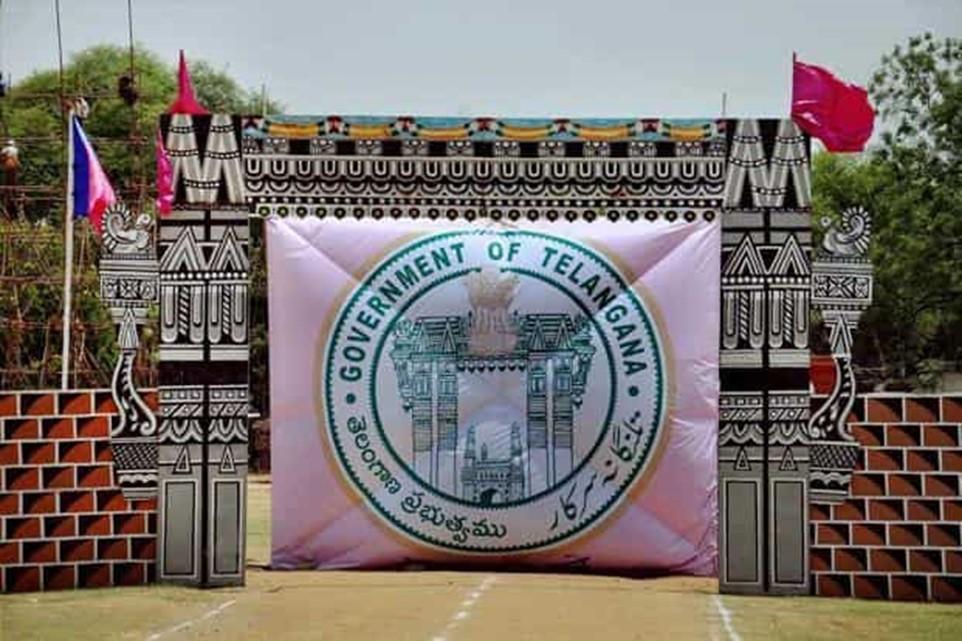
Image of the Day -African violets
This is the image of an ‘African’ flowering plant has been recorded scientifically for the first time in India in Mizoram. African violets, native to Tanzania and Kenya have been popular in the horticultural world, often used indoors in European countries. It is considered an endangered species. It is an epiphyte, a plant that grows on trees, and produces light pink flowers during the monsoons. This new discovery has underscored the floral diversity of the northeast that has a unique biogeographic placement as a part of two biodiversity hotspots, the Indo-Burma and the Eastern Himalayas.
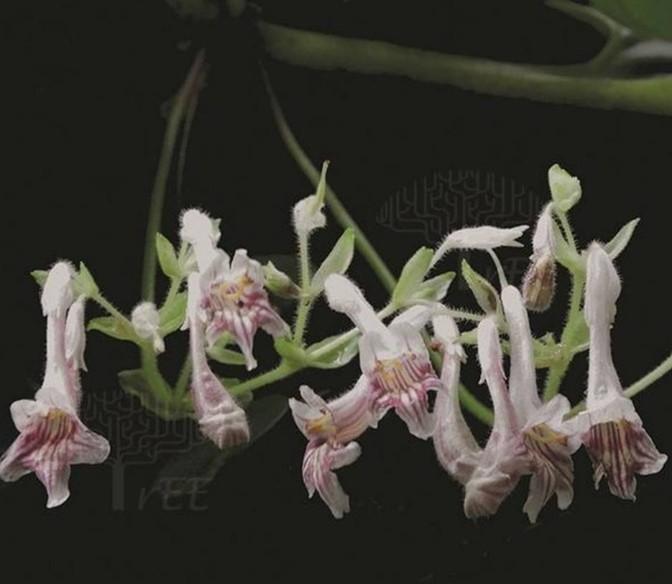
Nano Urea Liquid
- Context: The Indian Farmers Fertiliser Cooperative Limited (IFFCO) hasintroduced the world's first Nano Urea Liquid for farmers across the world.
- Nano Urea Liquidis a nutrient (liquid) to provide nitrogen to plants.
- It is developed to replace conventional ureaand it can curtail the requirement of the same by at least 50%.
- It contains 40,000 mg/L of nitrogen in a 500 ml bottle which is equivalent to the impact of nitrogen nutrient provided by one bag of conventional urea and is 10% cheaper than conventional urea.
- Conventional urea is 30-40% effective in delivering nitrogen to plants, while the effectiveness of the Nano Urea Liquid is over 80%.
- It has beenindigenously developed at Nano Biotechnology Research Centre, Kalol, Gujrat in line with Atmanirbhar Bharat and Atmanirbhar Krishi.

Primary source: https://indianexpress.com/article/india/iffco-launches-worlds-first-nano-liquid-urea-7338821/
Picture source: https://krishijagran.com/agriculture-world/world-s-first-nano-urea-by-iffco-available-in-liquid-form/
Horticulture Cluster Development Programme (CDP)
- Context: The Ministry of Agriculture and Farmers Welfarehas launched the Horticulture Cluster Development Program (CDP).
- With an aim to grow and develop identified horticulture clusters to make them globally competitive, this central sector program is implemented by the National Horticulture Board (NHB.
- The major objectives include:
- Address pre-production, production, post-harvest management, logistics, marketing, and branding.
- To leverage geographical specialisationand promote integrated and market-led development of horticulture clusters.
- Eg- Kinnaur- apples, Solapur- grapes, Theni- bananas, Sepahijala- pineapples, Chitradurga pomegranate, Lucknow- mangoes.
Primary source: https://pib.gov.in/PressReleasePage.aspx?PRID=1723155
AmbiTag
- Context: Indian Institute of Technology, Ropar, Punjab has developed
- It is an IoT (Internet of Things) device that recordsreal-time ambient temperature during the transportation of perishable products, vaccines, even body organs and blood.
- AmbiTag is shaped as a USB device and is India's first indigenoustemperature data logger for cold chain management.
- It continuously records the temperature of its immediate surroundingsfrom -40 to +80 degrees in any time zone for a full 90 days on a single charge.
- It generates an alertwhen the temperature goes beyond a pre-set limit.

Primary source: https://pib.gov.in/PressReleasePage.aspx?PRID=1723127
Picture source: https://www.indianweb2.com/2021/05/iit-ropar-develops-ambitag-indias-1st.html
Vajra Kavach
- Context: Mumbai-based startup Indra Water develops Vajra Kavach.
- Vajra Kavachis a simple disinfection process that enables Corona Warriors to reuse their masks and PPEs.
- It removes the scourge of viral particles from personal protective equipment (PPE), N95 masks, coats, gloves and gowns used by healthcare professionals. The disinfection process is complete in a few minutes and the viral load is said to be reduced by one lakh times.
- It makes personal protective equipment more available, affordable, and accessible. It helps in reducing the biomedical waste
- The technology has been developed under the NIDHI-PRAYASprogram initiated by the Department of Science and Technology.
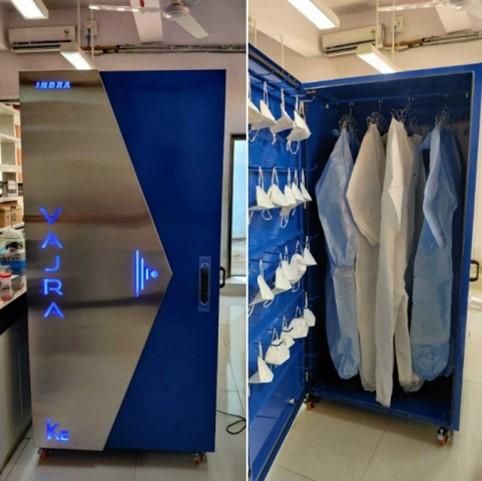
Primary source: https://pib.gov.in/PressReleasePage.aspx?PRID=1723073
Picture Source: https://pib.gov.in/PressReleasePage.aspx?PRID=1723073
Why controlling noncommunicable diseases is key to fighting Covid
Essence: Despite the spike in cases, the average Covid patient in India faces 50 per cent less risk of mortality compared to the global average because of controlled noncommunicable diseases (NCD) mortalities as comparison with other countries. Reason being, implementation of India’s multi sector NCD action plan along with several schemes investing in rural and urban health and wellness centres, strengthening primary health care by expanding its scope to include screening and diagnosis of NCD, eliminating out-of-pocket expenditures for the poorest, etc. At international level, India’s participation with the programme ‘The Defeat’ to tackle the twin challenges of the Covid pandemic and the underlying NCD morbidities will strengthen health sector by ensuring universal access to screening for NCD and application of AI paired with telemedicine. Achieving the SDG by reducing one-third of premature mortalities due to NCD will make India resilient to the viral pandemics of the future.
Why you should read this article?
- To get an overview of NCD and how are they more vulnerable to Covid?
- To understand reasons of India’s less risk of Covid mortality as compared to the global and average.
- To know what steps government has taken at national and international level to reduce NCD to reduce premature mortalities.
How to leverage hyperscale data centers for scalability- HBL
Essence: Earlier, a simple network of racks with storage units and a set of management tools to individually manage organisational data centers were enough. However, as organisations became increasingly internet dependent, the volumes of the data exploded with more of it added by the social media and the sensing devices that grew manifold. In this context, this article discusses hyper scaling as a solution for challenges of scaling up when companies expanded, and dipping performance when peak loads were required to be handled.
Why you should read this article?
- Understand the conceptual basis of Hyperscale and how it enables a data center to scale both horizontally and vertically.
- Learn about the differences in working of a traditional data center which typically has a SAN (Storage Area Network) and that of a hyperscale data center which employs a clustered structure with multiple nodes housed in a single rack space.
- Identify the associated benefits of employing Hyperconvergence such as superior performance and deliver more at a lower cost and a fraction of time than before.
Article Link: https://www.thehindubusinessline.com/opinion/how-to-leverage-hyperscale-data-centers-for-scalability/article34701771.ece
COVID diplomacy 2.0, a different order of tasks- TH
Essence: Editorial is discussing the major tasks before Indian diplomats & changes observed in last 1 year. After the second wave, the immediate imperative was to deal with oxygen, medicine shortages, handling vaccine shortages.
Many countries are still holding out on the idea of freeing up intellectual property rights on vaccines for three years. That could ultimately hold up proceedings at the WTO, as it works by consensus. Another big challenge for Indian diplomacy is to manage the fallout of the vaccine promises with neighbours, like Bhutan and its vaccine drive depended entirely on India’s promise of vaccines.
Why you should read this ?
- To know about the shift in agenda of India’s diplomatic outreach in past 1.5 year.
- To understand the role played by India’s diplomacy in managing domestic health crises.
- To get insights into the major challenges on diplomatic front, in WTO & India’s neighbourhood.
- To understand the need of India taking lead role in ensuring the world is protected from the next such pandemic.
Article Link: https://www.thehindu.com/opinion/lead/covid-diplomacy-20-a-different-order-of-tasks/article34702641.ece
Where women of India rule the roost and men demand gender equality: About Khasi Tribe
About the Khasi Tribe:
- The Khasi people of north-eastern India are a matrilineal society.
- The youngest daughter inherits, children take their mother's surname, and once married, men live in their mother-in-law's home.
- This society stands against the concept that men are endowed with natural leadership. They should protect women, who in return should support them.
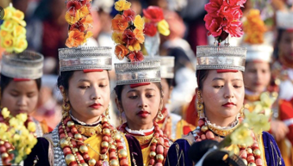
Origin of matrilineal society:
- According to some anthropologists, the matrilineal system goes back to a time when Khasis had several partners, and it was hard to determine the paternity of children as male members were away from home for too long fighting wars.
Not all is so rosy:
- The decisions taken by a woman must be endorsed by her maternal uncle.
- The matrilineal system should not be confused with matriarchy.
- Khasi women have never held power. The former rulers of the tribe left their throne to the son of their youngest sister. All the chief government ministers are men, and few women sit on village councils.
Learnings from the case study:
- Difference between Matriarchy and Matrilineal system.
Connect with the syllabus:
- Can you name an ancient dynasty in India from deccan are which has matrilineal system?
Where can we use this as case study:
- Diverse Tribal traditions in India.
Share the article
Get Latest Updates on Offers, Event dates, and free Mentorship sessions.

Get in touch with our Expert Academic Counsellors 👋
FAQs
UPSC Daily Current Affairs focuses on learning current events on a daily basis. An aspirant needs to study regular and updated information about current events, news, and relevant topics that are important for UPSC aspirants. It covers national and international affairs, government policies, socio-economic issues, science and technology advancements, and more.
UPSC Daily Current Affairs provides aspirants with a concise and comprehensive overview of the latest happenings and developments across various fields. It helps aspirants stay updated with current affairs and provides them with valuable insights and analysis, which are essential for answering questions in the UPSC examinations. It enhances their knowledge, analytical skills, and ability to connect current affairs with the UPSC syllabus.
UPSC Daily Current Affairs covers a wide range of topics, including politics, economics, science and technology, environment, social issues, governance, international relations, and more. It offers news summaries, in-depth analyses, editorials, opinion pieces, and relevant study materials. It also provides practice questions and quizzes to help aspirants test their understanding of current affairs.
Edukemy's UPSC Daily Current Affairs can be accessed through:
- UPSC Daily Current Affairs can be accessed through Current Affairs tab at the top of the Main Page of Edukemy.
- Edukemy Mobile app: The Daily Current Affairs can also be access through Edukemy Mobile App.
- Social media: Follow Edukemy’s official social media accounts or pages that provide UPSC Daily Current Affairs updates, including Facebook, Twitter, or Telegram channels.


